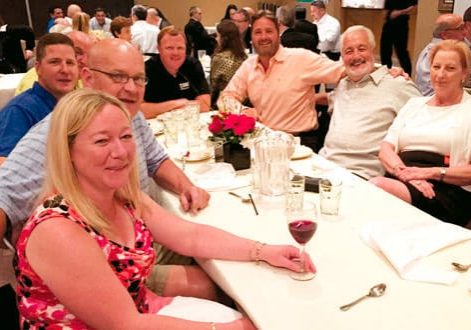On September 13, 2008, an adventurous 11-year-old boy in Lyngal, Norway, was hanging from an escalator handrail when he fell and died. Following a political rally at the National Mall on October 30, 2010, the brakes of a crowded escalator in the L’Enfant Plaza Metro in Washington, D.C., failed, sending passengers flying down the escalator. Nineteen people collapsed in a pile at the bottom, four of whom sustained non-life-threatening injuries. On July 26 of this year – in what is being considered one of the most horrific escalator accidents ever – a 30-year-old Chinese woman fell into an escalator truss while pushing her young son up and out to safety moments before she was swallowed by the escalator.
Escalator Safety by Fartash Razmjoo and Anthony Andon could not come at a more critical time. Accidents like these underscore the need for a full awareness and diligent implementation of safety measures at all levels. All three of the accidents, mentioned above, happened due to one – or a combination of – three causes: faulty design, insufficient maintenance or unsafe passenger behavior. Razmjoo and Andon studied scores of accidents like these. In the book, they categorize their various causes and lay out action plans to prevent and respond to them in the future. They also compare the code requirements of ASME A17.1/CSA B44 with EN 115, explaining the implications for manufacture, installation and public use.
For Razmjoo, this is personal. One of the technicians working under his supervision died while performing maintenance work on an escalator. He says:
“I realized that most people who use escalators do not know the risks and possible dangers of these devices. Even some of the technicians who work on escalators do not follow all the safety rules and are not cautious enough.”
The broader issue here is trust. Andon notes that modern urbanism as we know it is indebted to the technology that made safe vertical transportation possible: “Without safety systems and reliable devices, there would be no such thing as skyscrapers, shopping malls and subways.” Distrust in the very means that made urbanism possible may have serious implications for the future of cities if safety is not taken seriously.
After years of working in the industry, Razmjoo and Andon felt called upon to share their expertise and experience with other people. They knew they needed to do something to raise the level of safety awareness among their peers and the riding public. There are few resources available on escalators, much less one that focuses on escalator accidents and safety measures. So, they decided to write a book that could serve as a reference for training technicians and a source of information for the public.
The book is also a good source of information for firefighters, insurance inspectors, building owners and architects. It discusses safety-related issues, such as selecting the proper escalator, conducting traffic analysis, designing for enough space and installing building-safety features.
Razmjoo and Andon believe that one of the leading causes of accidents is the public’s lack of knowledge or attention to safe riding practices, and that the number of accidents can be reduced by training. Andon states, “I believe we should start this kind of training in schools by teaching children to exercise safety and use caution on elevators and escalators.” On the other hand, Razmjoo notes:
“There are a lot of accidents due to a lack of proper maintenance. I think the biggest challenge in this industry is the level of maintenance, which has a great impact on the number of accidents.”
Razmjoo blames the nature of the maintenance market for this oversight. In the rush to cut costs for the sake of profitability, companies spend less time performing tests and avoid replacing worn escalator parts. The riding public ends up paying the price.
So, Razmjoo and Andon have adopted a comprehensive approach to furthering escalator safety. Their perspective invites us to find our role in the overall picture and play our part in making safety a priority. In Razmjoo’s words:
“I hope that, by training people and focusing the attention of all parties involved on the importance of safety, we will see safer vertical transportation for all people, especially children.”
EW Interviews Fartash Razmjoo (FR) and Anthony Andon (AA)
EW: What are some recent important changes you have witnessed in the vertical-transportation industry?
FR: I think using printed circuit boards and new controllers rapidly improved the capability of elevating devices. Today, destination dispatch is a great jump forward for vertical transportation. Machine-room-less elevators and new belts are also important changes in the industry.
AA: And having access to new, upgraded versions of the codes is a great way to stay on top of all these changes and new technologies.
EW: How do you think the vertical-transportation industry will change in the future?
AA: Maglev technology can change vertical transportation in the future. In the escalator industry, the Levytator is also a revolutionary system that can make great changes in the future.
EW: What has been one of the highlights of your career?
FR: I have been in charge of some very big escalator installation projects in Iran that had special conditions and time schedules. One project, the installation of more than 100 escalators in the Tehran subway, was one of the most complicated and difficult projects I’ve ever seen. Other projects I’ve overseen include the installation of 60 escalators in the Isfahan City Centre and more than 50 escalators in the Kourosh shopping center. I’m very pleased that I have been part of these huge projects.
AA: I have published five books about elevators and escalators as author or coauthor. Safety is my passion.
EW: What challenges have you faced? How did you overcome them?
FR: Moving to Canada and working in a new environment has been a major challenge for me. By reading and trying to stay updated, and with the support of my colleagues, I have been able to overcome this big challenge.
EW: What is your advice for young people in the vertical-transportation industry today?
FR and AA: We suggest young people in this industry use all available resources to improve their knowledge. It is always good to learn from the experiences of more senior people working in this industry, but they should not rely solely on these experiences, but try to study all available resources, including books on elevators and escalators.
Get more of Elevator World. Sign up for our free e-newsletter.










